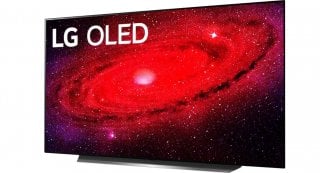5 Ways to Calibrate Your OLED HDTV
We've got you covered.
You finally did it and got yourself that OLED TV you’ve been dreaming about for a couple of years. Now, you aim to get top-notch return on your investment by achieving the best possible picture quality on your brand-new device.
Sure, you can go out and spend hundreds on fancy instruments to calibrate your TV, but let’s try to save a few bucks here. Your eyes, although they can be flawed at times, can do a valiant job in leading you to that picture-perfect promised land.
Know that there are no really “wrong” ways to calibrate your TV, and it will be an exercise in trial and error. If the picture looks great to you, who’s to say you did it wrong? In this instance, beauty is indeed in the eye of the beholder.
To help you get a head start on your mission, here are five ways to calibrate your OLED TV.
When you turn on your TV for the first time, head over to the settings for picture presets. Just note that the exact names may vary slightly between manufacturers. You may be enticed to choose the Vivid/Dynamic option, but try to stay away from this because it’s generally a showroom setting. As for the Movie/Cinema mode, this always needs a room that’s perfectly dark. So, your best bet is the Standard/Natural option, and that should get you set up for more detailed calibration efforts later on.
Next is to turn down your TV’s sharpness, which will actually improve the images on the screen. Many people think that if you raise the sharpness control, you’ll receive a sharper picture—but that is far from the truth. The problem lies in the fact that the sharpness control itself doesn’t do anything to boost detail. Instead, that detail is often masked by an artificial-looking enhancement. Just turn the sharpness level all the way down, and you should see a noticeable difference.
Next on the list is to keep a close eye on the brightness level. Always having your OLED TV on peak brightness will only make the screen more susceptible to image retention or burn-in, with the latter being a permanent issue and obviously something you want to avoid at all costs. For LG OLED TVs, it is recommended that the light setting should be between 45 and 50.
If you’re a big-time gamer, make sure to set your OLED TV to Game mode, as this will surely enhance your overall gaming experience. Take note that motion-smoothing settings like TruMotion, a source of input lag, should not be used while gaming. You can also probably ignore the Sports mode as well, because that setting is generally reserved for larger viewing environments like sports bars.
Finally, if you want a more immersive experience while calibrating your TV, be sure to check out some of the great setup Blu-ray discs that are available. No matter your skill level, these setup discs will help you achieve the best performance from your TV. A couple of notable options are Disney’s “WOW: World of Wonder” and “Digital Video Essentials: HD Basics.”
Ethen Kim Lieser is a Science and Tech Editor who has held posts at Google, The Korea Herald, Lincoln Journal Star, AsianWeek and Arirang TV. He currently resides in Minneapolis.
Image: Reuters

